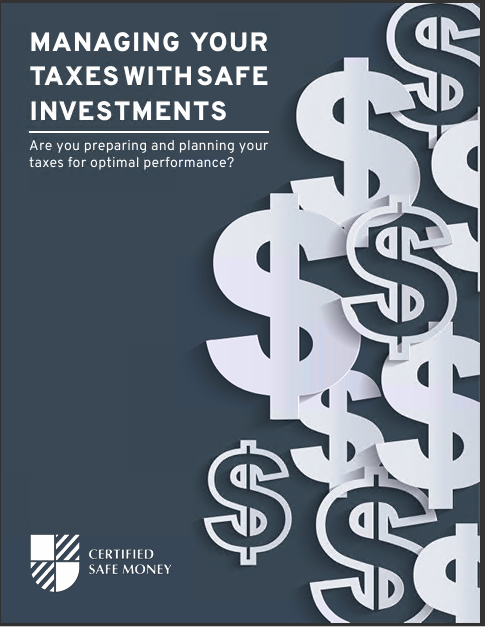An annuity is an insurance contract issued and distributed by an insurance company to pay out invested funds in the future in the form of a fixed income stream. Annuities can be purchased with monthly premium or lump-sum payments by investors. Terms in annuity calculation Before proceeding with the calculation, we must define some of the variables to be used. Annuitant: The individual who enters into the annuity contract. Annuitization/payout: When an insurance company makes payments to the investor. The accumulation phase: It is the time between signing the contract and paying the agreed-upon premium(s) and the annuitization phase. Annuities rate (rm): Annuity rates (rm) vary. The insurance provider will offer you a nominal annual rate, not your actual premium (the effective rate). Annuity duration (t): Total annuitization (or accumulation) years. Annual compounding periods (m): This is how often you pay premiums in a fractioned annuity (one that pays more than once a year) during the accumulation phase or how often the insurance company makes payouts during the annuitization period (usually 12). Total annuity conversions/compounding periods (p): this could be Monthly, bimonthly, or quarterly payouts. The conversion periods are the total number of payments or premiums you’ll get during the annuitization or accumulation. p = t * m. Monthly income or annuities (Cm): We’ll use Cm for the annuity payments we want to calculate and Cm for periodic premiums paid in the deferred annuities’ accumulation phase. Annuity Value (PVA or A0): Value of future annuity payments; it is the money you’d pay the insurance firm to guarantee a fixed income (Cm) at the specified rate (rm) for a given period of years (t). Annuity future value (FVA or Ap): It’s the sum of annuity payments plus future interest. How to calculate annuity? There are different types of annuities, and each is calculated differently. You can calculate Annuity income in a matter of minutes. Whatever form of annuity you choose (immediate or deferred), all you need to know is the value of your investment at the time of annuitization, how long you’ll get consistent income, and the rate (fixed or variable) at which your investment grows over time. In the case of immediate annuities, the present value is just the single premium or lump sum paid to the insurance company when you purchase the annuity (i.e., I bought a $100,000 immediate annuity”). In the case of deferred annuities, the “present” value is the future worth of the money you invest today plus any further premiums you pay throughout the annuitization period, plus interest, once the annuity starts paying income (which will be after retirement). It is beyond the scope of this essay to cover all forms of annuity calculation, especially those with contract riders; therefore, we’ll focus on the two most essential and prevalent scenarios in the following sections: How to calculate immediate annuity payments? The immediate fixed annuity is the simplest of all, in which you pay a lump sum and begin receiving monthly payments on the following pay date for a predetermined number of years. The following symbol is used to represent returns in this calculation: Where Cm denotes the amount paid out each month, “A0” stands for “principal” (the amount of money you paid to obtain your annuity or the present value of that amount). According to the terms of the contract, m is the number of payments each year (either monthly or bi-monthly or quarterly or yearly), and rm is the nominal annual rate in the contract. The contract will pay you income for the specified number of years. Illustration 1: After retirement, a $500,000 immediate annuity is acquired for 10 years Let’s say you have $500,000 saved for retirement and consider what you can do with it over the next 10 years. You are interested in determining how much money you will receive from a fixed annuity monthly when offered a 3.25% rate.
- Since you are interested in monthly payments, there will be 12 compounding periods each year, denoted by the symbol m = 12.
- The nominal interest rate is rm = r12 = 3.25% = 0.0325 (you have to turn the percentage into decimal form by dividing by 100)
- The annuity’s present value is $500.000, which you currently possess.
- You anticipate receiving a fixed salary for 10 years; hence t = 10.
- Since you are interested in the return, you are searching for the formula Cm = C12 =?
All that’s left is to enter the data into the formula and perform the calculations:
So, for the next 10 years, you could expect a monthly return of $4,886 if you invested $500,000 at a rate of 3.25%. Illustration 2: Income from a $100,000 deferred annuity that was acquired at age 30 and had a 10-year term, with payouts beginning at age 60, and a constant rate of 3% There’s an easy way to figure out your retirement income in your 60s if you buy $100,000 in deferred annuity today. It increases at a steady rate of 3% before and after the payment period. In this instance, the following information will be derived: As a result, if you are 30 years old and invest $100,000 today, you may expect to get $2,372 per month until you reach the age of 70. The bottom line Calculating annuity income is simple, but there are several factors to consider. The above is a sample of calculations in the most basic scenarios, but they might help you understand what calculating annuity income entails. When you purchase into a contract, the numbers may not entirely agree with your estimates, owing to fees we didn’t consider here. However, you should be able to apply the formulae in this post to generate an accurate estimate of how much you can anticipate receiving in the future from the money you save now.
Contact Information:
Email: [email protected]
Phone: 6096581732














